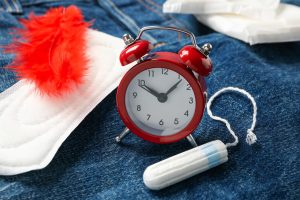MENOPAUSE: THE COMPLETE GUIDE
The average age for Menopause in the UK is 51, so many women will start to experience perimenopausal symptoms around 47.
Menopause is a natural biological process. But the physical symptoms, such as hot flushes and emotional symptoms of Menopause may disrupt your sleep, lower your energy or affect emotional health. There are many effective treatments available, from lifestyle adjustments to hormone therapy.
What happens when a woman goes through Menopause?
Menopause, or as the Japanese like to call it, ‘the Second Spring,’ is the second hormonal transition after puberty for a woman. As the name Second Spring implies, it is a time for new beginnings and the second stage of a woman’s life when possibly childrearing responsibilities are essentially over, and she can look towards investing more time in herself.
Leading up to Menopause is characterised by a time of hormonal fluctuations where the sex hormones Oestrogen and progesterone begin to fluctuate more as egg production from the ovaries becomes erratic. When Menopause is reached, and no more eggs are being produced, the levels of sex hormones Oestrogen, progesterone, and to some extent, testosterone become very low.
Women need to be aware of lifestyle or other interventions to protect against the increased risks of osteoporosis, cardiovascular disease and dementia this period of low Oestrogen holds.
What are the symptoms of Menopause?
The hormone fluctuations that start in the menopause transition can trigger various symptoms. For some women, these may be bothersome enough to treat some, and for others, knowing that what’s happening to your body is normal may be enough.
Common symptoms associated include abnormal menstrual bleeding, which can take the form of irregular periods, heavy periods or bleeding in between periods. Hot flushes, night sweats, vaginal dryness, sleep disturbance, mood swings and joint pain are common symptoms. Mood and psychological symptoms can often be the most difficult to deal with, including temporary cognitive changes, brain fog, low mood and anxiety. Vagina dryness decreases libido, and pain with sexual intercourse is also common.

What are the 3 stages of Menopause?
Perimenopause is the years before periods stop or the time before Menopause. It’s the time in a woman’s life when her hormonal cycles start shifting and probably the most symptomatic phase of Menopause. Symptoms are due to the fluctuations and swings in hormones during this time. Periods can become erratic
Menopause signifies the end of monthly cycles. Officially, it’s 12 months since a woman’s last period, the average age being 51. The ovaries are producing very little of the sex hormones oestrogen and progesterone, and the ovaries are no longer producing eggs.
Post-menopause is the time after a woman has reached Menopause. Hormones are no longer fluctuating. Although women may have a decrease in some symptoms – others may persist.
At what age does a woman stop having her period?
The average age a woman stops having her period is 50, and Menopause is defined as a year after her last period.
Women who require contraception are advised to continue using contraception until a year after their last period if over the age of 50 or two years after the previous period if under 50.
Can I stay on birth control pills?
If contraception is required, the combined contraceptive pill should not be used over 50. However, the progesterone-only tablet can be used safely over 50 until contraception is no longer necessary.
Women may often be given the combined contraceptive pill to replace oestrogen levels if diagnosed with early Menopause. Although HRT does not provide contraception, this can be changed to hormone replacement therapy (HRT) to replace Oestrogen once a woman reaches 50.
The progesterone containing intrauterine devices (Eg. Mirena Coil) is a good option for women who require control of heavy periods and contraception and can also be used as the progesterone part of hormone replacement therapy.
Is there a blood test for Menopause?
Blood tests to look for Menopause are not accurate during the perimenopause as hormone levels fluctuate, and a blood test will only show a snapshot in time. After a woman’s periods have stopped, a blood test will show a raised FSH (follicle-stimulating hormone) level and low oestrogen levels if she has reached Menopause.
Blood tests are usually not required, as the diagnosis of Menopause or perimenopause can generally be made by clinical symptoms alone.
Blood tests are sometimes done before starting HRT or after beginning HRT to look for other causes or to check HRT absorption.

How do I prevent early Menopause?
The age we go through Menopause is multifactorial, and genetics is thought to play a significant role in this. If there is a family history of early Menopause, it then becomes more likely for the woman to transition earlier. Lifestyle factors are thought to play a role, and stress reduction, avoidance of smoking and a healthy lifestyle are somewhat protective of early Menopause and likely to enable an easier transition through Menopause.
Early Menopause can be unavoidable for some women who will experience medical Menopause (Induced by medication), surgical menopause (Ovaries are removed) or premature ovarian insufficiency (POI) when the ovaries stop functioning earlier due to genetic or environmental factors.
What helps Menopause?
Diet and lifestyle changes can significantly improve menopause symptoms, and women who start these changes early benefit from an easy transition.
Nutrition is essential for menopause management. (see nutrition in midlife).
Balancing blood sugars and eating nutrient-dense meals can reduce symptoms.
The proper forms of exercise will also alleviate symptoms. For some women, high-intensity exercise such as running or HIIT will exacerbate symptoms as the body will perceive this as ‘stress ‘.
Exercises that help the body recuperate, such as yoga, pilates, and walking, can benefit midlife.
Stress management is integral during Menopause as increased stress will increase cortisol levels, which plays havoc with sex hormones. Building in self-care and relaxation will keep cortisol levels stable and symptoms controlled.
When diet and lifestyle changes have not entirely controlled symptoms, HRT is the most effective in alleviating symptoms.

What can a woman do about night sweats?
Night sweats are a common symptom of perimenopause and Menopause. Wearing loose, cotton nightclothes can be helpful. Trying pyjamas made from bamboo in combination with bedsheets made from the same material is effective in sweat absorption.
Ensuring the room is cool is essential, and this can sometimes mean a partner sleeping in the same room acquiring an electric blanket. Cooling head pillows such as the ‘Chillow Pillow’ are helpful ways to keep oneself cool at night and aid in a good night’s sleep.
HRT is effective in managing night sweats and improving sleep quality.
Does heart disease risk grow during Menopause?
One of our sex hormones, Oestrogen, keeps our blood vessels supple and elastic. As our Oestrogen levels decline after Menopause, arteries can become brittle, predisposing us to plaque formation. This can give rise to coronary heart disease.
Replacement of Oestrogen using HRT effectively reduces cardiovascular risk if started within ten years of Menopause. Lifestyle change, including regular exercise and a Mediterranean-style diet, protects against heart disease after Menopause.
Does Menopause cause weight gain?
Menopause can result in weight gain due to a time in our lives when metabolism decreases due to a fall in muscle mass. As the body’s oestrogen levels fall in Menopause, it turns to alternative sources of Oestrogen from fat cells, which typically get stored around the belly area.
How to lose weight in Menopause
Increasing muscle mass by resistance exercises and increasing metabolism can help weight loss. The change in diet to avoid refined carbohydrates and sugars, increase complex carbohydrates, and take protein with each meal will keep blood sugar stable and prevent further weight gain.

What is a pelvic floor disorder?
Pelvic floor disorder or pelvic organ prolapse is the laxity of the muscles of the pelvic floor and/or the descent of the vagina, uterus, bladder or bowel, or a combination of these. These can give rise to urinary leakage or incontinence, a bulge at the vaginal opening, increased pressure, or the feeling that something is falling out. Other symptoms are difficulties having a bowel movement and occasionally obstructing urine flow. Pelvic floor disorders don’t cause pain with sex or pelvic pain.
Pelvic floor disorders can be related to changes in collagen, which is expected due to low oestrogen levels after Menopause. However, it’s also associated with age and any activity that damages collagen and pelvic tissues, such as smoking, constipation and childbirth.
Treatment for pelvic floor disorders combines topical (vaginal) HRT and pelvic floor exercises or surgery.
Can you fix a prolapse with pelvic floor exercises?
Pelvic floor exercises may be enough for some women to fix a prolapse. These exercises are sustained contractions, holding the squeeze or contraction to support pelvic floor muscles, and working for up to 10 seconds. Prolapse can be significantly improved for perimenopausal or postmenopausal women by adding topical (vaginal) Oestrogen, which will increase the effectiveness of pelvic floor exercises by strengthening vaginal and pelvic tissue.
Surgery is sometimes considered for women with prolapses. However, women are encouraged to try all the non-surgical options first.
Are you struggling with symptoms of hot flushes or other signs? Book a complimentary discovery call to find out how we can help.



